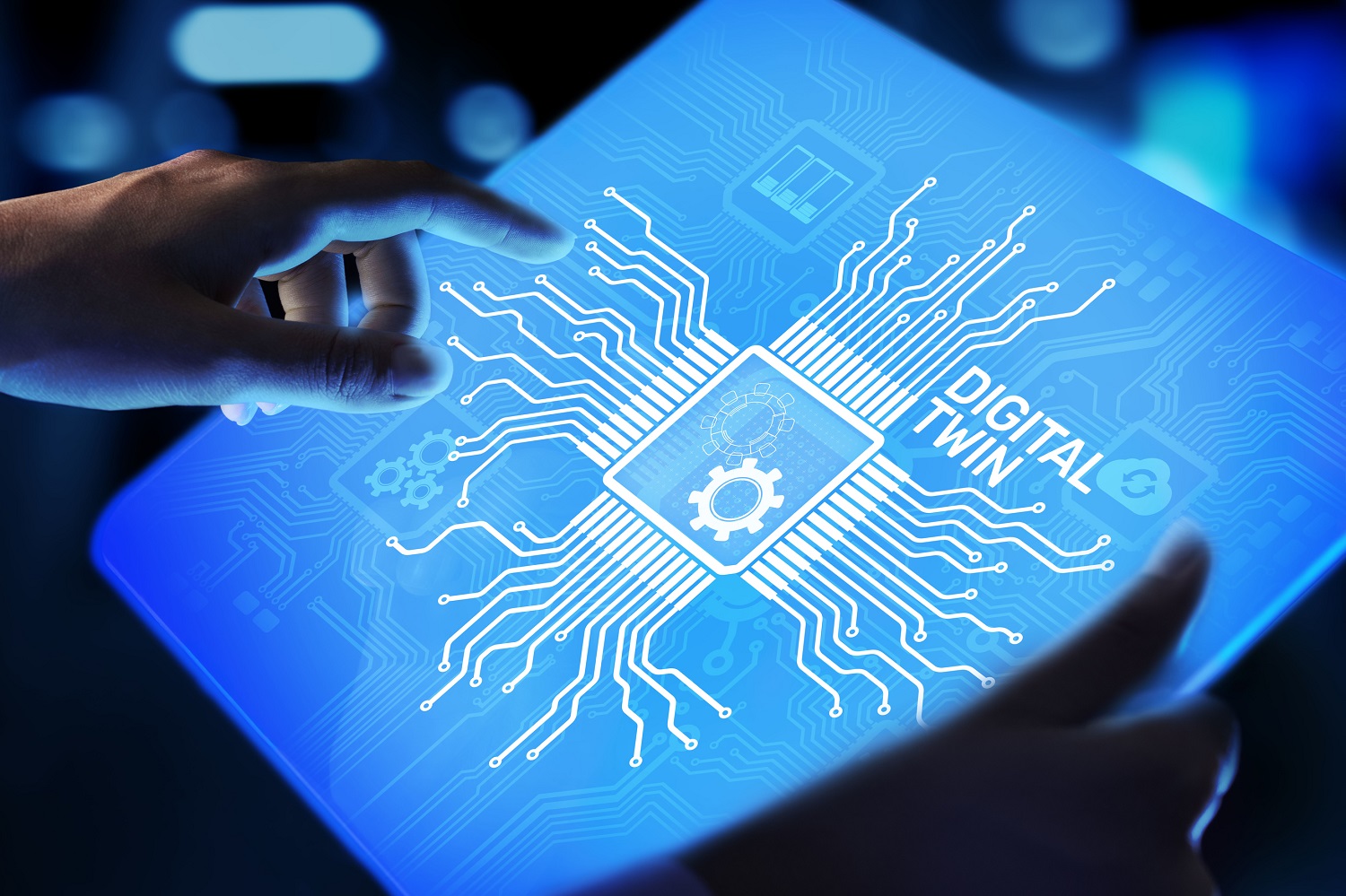The global digital twin market is expected to reach $15 billion by 2023, with a compound annual growth rate (CAGR) of 37 percent between 2017 and 2023. Major companies such as General Electric, IBM, and Microsoft are using digital twin technology to optimize products and services, perform predictive maintenance and health monitoring, and design new products. Gartner named digital twins as one of the top 10 technology trends for 2019, noting that the focus of this technology will be in IoT.
Here’s a brief overview of digital twin technology, as well as a deeper look into the relationship between digital twins and IoT, and some real-world examples to demonstrate the benefits of these virtual models.
The concept: What is digital twin technology?
A “digital twin” is an exact replica of a physical counterpart, creating a connection between the physical and digital worlds. Gartner defines it as “a digital representation of a real-world entity or system.”
It is a virtual representation in the cloud made possible by computer-aided design (CAD) and engineers. It functions exactly as the physical version would, but in a virtual environment. Even large, complex items or systems can be replicated, such as factories and cities.
A digital twin does not replace the physical product or system—a digital twin of a combustion engine isn’t going to make your car run. So this isn’t like transferring all of your photos to the cloud and then discarding the original hard copies. Instead, digital twins allow you to monitor and test physical objects without having to be near them, and in a safe environment. For instance, you can use a digital twin to test how a piece of equipment will respond to a sudden temperature spike, which can help you design and implement safety measures, without real-world (and potentially risky) testing.
The blueprint: How to build a digital twin
A digital twin is built using sensors attached to the physical object, which collect large amounts of data. The data your sensors gather allows the digital twin to behave in exactly the same way as its physical counterpart does. You can monitor asset health, test new ideas, and run various simulations, discovering exactly how the physical asset will react to different stimuli or environments.
This concept has been around for some time, but in a more basic form. Computer-generated models of new products are a great example of early digital twins. But modern digital twins are different, thanks to the following technological advances and features:
- More powerful models that focus on specific business outcomes.
- A connection to the physical version, often with real-time monitoring and/or control.
- The use of Artificial Intelligence (AI) and data analytics to identify opportunities to improve efficiency.
- The ability to create scenarios to make informed business decisions.
Here are some tips for implementing digital twin technology:
- Define objectives—What business benefit do you expect to derive from the digital twin? Clearly defining objectives early on is key to ensuring that the digital twin technology is properly employed.
- Evaluate your readiness—Do you have the internal skills required to adopt digital twin technology? (Keep reading for more details on these skills.) If you don’t, you’re going to want to find a team with the skills you need.
- Keep it simple—A digital twin is not always the right answer. You may be able to achieve the same goals with a more traditional approach. For example, if you can effectively monitor and maintain equipment with data from IoT sensors and do not need to interact with the data in a digital twin environment, then this technology just adds unnecessary complexity.
- Track progress—While it may take some time to determine how well your digital twin project is performing, you need to identify and capture key performance indicators (KPIs) so you can objectively evaluate the impact on your business.
There are also technical considerations and specific skill requirements if you want to deploy digital twins in your organization. Your network and your team must be able to support and provide:
- Continuous data collection
- Big data analysis, including algorithms to use the data properly
- Data analysts and team members who understand data models well enough to gain value from digital twins and make the right business decisions
Digital twins and IoT
The expansion of digital twin technology is made possible by IoT. A digital twin needs data from the physical asset, and IoT sensors provide this data.
As they become more sophisticated and less expensive, IoT sensors make the adoption of digital twins possible across more enterprises, and for a broader array of objects and systems. As IoT devices collect more data, digital twin technology helps developers and data scientists optimize IoT systems and evaluate potential scenarios before deployment.
By 2020, it is predicted that 30 percent of G2000 companies will use digital twin technologies to improve product innovation and productivity. As businesses gain a deeper understanding of what digital twins can do, applications will become more advanced. For example, advanced simulations created with AI will allow organizations to perform deeper analysis and create new and exciting products.
The technology holds a lot of promise for Industrial IoT in particular, with manufacturing the leading industry to embrace digital twins. Maintenance of equipment and operational efficiency are some of the areas in which digital twins benefit Industrial IoT.
Manufacturing and engineering organizations should embrace digital twins in order to thrive. The use of digital twin technology with IoT delivers the following benefits:
Predictive maintenance
Digital twins provide an accurate picture of how every machine on your production floor is working, allowing you to identify issues immediately. You no longer need to rely on generalizations or assumptions based on age or use. Each piece of equipment can be accurately tracked and monitored as a unique unit.
Abnormal patterns in the data from IoT sensors are detected and used in predictive models on the digital twin to predict failures before they happen. This allows you to predict the behavior of machines under different conditions and circumstances through simulations, such as finding out how a piece of equipment will respond to a harsh environment or a sudden change in temperature. Better yet, you can troubleshoot these issues remotely, reducing resolution times.
Operational efficiency
A potential fix for an issue can be tested on a digital twin first, conserving resources while also improving safety. As applications of the technology expand, digital twins will be used to monitor entire production processes, decreasing downtime and preventing errors from occurring.
Innovation
Digital twins let you run simulations before a full version of a physical device is even built with a digital prototype. The virtual prototype is based on the physical prototype and allows you to refine the product while keeping costs down. The data collected can also be used to improve existing products and services, leading to increased customer satisfaction and sales.
Reduced costs
Can also use the technology to reduce operating and even capital expenses by increasing the life of assets through predictive maintenance and asset optimization.
Real-world scenarios: Digital twin applications
- General Electric—GE has developed a network of digital twins for utilities. It provides a comprehensive view of the utility grid. Data on assets, operations, and the environment are combined with analytics and machine learning to improve predictive maintenance, operational efficiency, and customer service.
- Kaeser—Kaeser uses digital twins to innovate. Instead of installing its air compressors at a site and leaving operations in the customer’s hands, the company now offers a service in which it monitors and maintains those assets through digital twins. Real-time data monitors performance and measures actual usage. Commodity costs have been reduced by 30 percent since implementing this new service.
- Volkswagen—VW creates digital prototypes of its vehicles to optimize product lifecycle management. All employees have access to real-time, detailed data about each car model, improving design, quality assurance, and assembly.
Some companies provide products and tools to help other businesses deploy digital twins. IBM offers several products with digital twin capabilities, including IBM Rational Rhapsody and Rational Engineering Lifecycle Manager. Microsoft also makes it easier for organizations to explore digital twin technology with its Azure Digital Twins product. The platform comes with predefined and extensible twin object models to build digital twins specific to your industry.
Improvements in predictive maintenance, operational efficiency, and product design and testing make digital twins particularly attractive to Industrial IoT—but the technology is taking hold across all industries. It remains to be seen exactly how large of a role digital twins will play in the future of business, but it is certainly fair to say we should all have a basic understanding of the technology and the potential it holds

